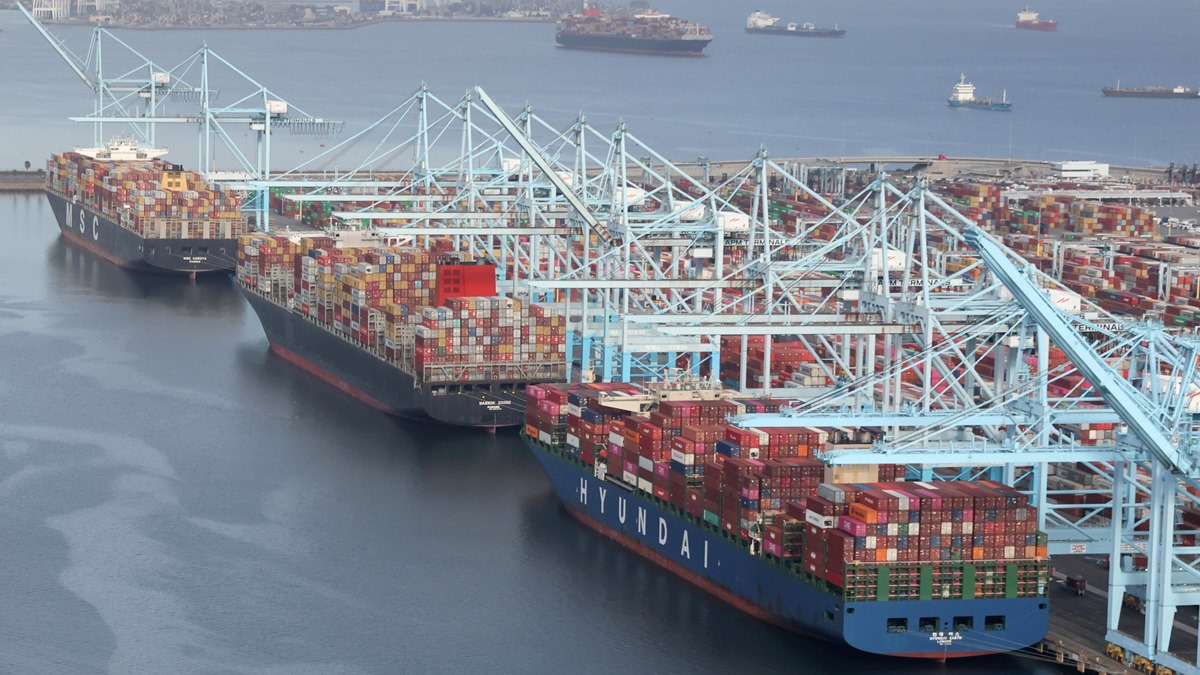– By Neeraj Bansal
At the heart of India’s economy lies the service sector. Accounting for a lion’s share—roughly 50 per cent—of the GDP, services are a vital contributor to the country’s inherent domestic needs while also propelling its global agenda.
India’s service exports basket
Driven by reformatory initiatives, increasing investments and an abundance of a young workforce, India has firmly established itself on the global stage for services. Largely catering to the demands of advanced economies, the country now ranks seventh among service providers with a 4.4 per cent share in global exports.

Although IT services dominate total exports, shifts in the global outlook are opening numerous avenues for many upcoming industries to grow. India is emerging as the most preferred location for global shared services. The number of global capability centres (GCCs) in the country—an estimated 1,580 in FY23—is expected to increase to more than 1,900 by 2025. This presents emerging opportunities for other services—such as consulting, education, advertising, finance and emerging tech—to expand beyond the traditional trends. For instance, according to a recent NASSCOM-KPMG in India report, about 30 per cent of digital banking products produced globally are developed in GCCs in India. Additionally, we are also home to the third-largest start-up ecosystem globally. This growing momentum can help India achieve its near-term service export goal of USD400 billion in the current fiscal, laying the foundation of the target of 1 trillion in exports by 2030.
How can we achieve USD1 trillion in exports?
A step beyond IT: While the software industry has been the backbone of India’s service sector, non-IT services also have immense potential that need to be tapped strategically. The disaggregation of service value chains, the option of remote working and India’s strengthening digital infrastructure are catalysing modern service lines. Today, the number of new-age GCCs is on a steady rise, across prominent domains—such as banking, financial services and insurance (BFSI), engineering research and development, and software and internet. Estimates suggest that about 50 per cent of the GCC workforce in India is involved in tech-enabled processes, hinting at an upward progression in the value chain. Going ahead, the GCC market in India is estimated to reach USD110 billion by 2030, growing at a CAGR of 14 per cent.
These trends are driving non-traditional sectors, which of late, have showcased favourable growth trends. For instance, India’s business services exports have shown positive trends, growing by USD21 billion in the previous year. India is also becoming a popular choice for financial services. In 2022, the value of financial services exported by India stood at USD7.3 billion, marking an annual percentage change of 43 per cent—the highest among major exporters. Similarly, with global freight charges returning to normalcy, transport services from India have also increased optimistically. Rising infrastructural investments, improving connectivity and enhancing ease of doing business can further sustain positive growth trends for these non-IT service lines.
Additionally, India can also prepare a strong foundation to harness the demand for high-value technical services. For instance, given the global semiconductor boom, demand for specialised technical expertise in the fields of R&D, manufacturing services, supply chain management and maintenance and repair will be on the rise. India can increase its focus on moving up the services value chain and establish itself as a modern-day solution provider.
Diversifying market horizons: Through the years, India has leveraged its skilled workforce as a prominent asset to seize the surging demand from advanced economies—such as the US, Japan and the UK. Although we have benefited, the majority of our exports have been concentrated in a few markets. The US and the EU alone account for about 80 per cent of the total services trade from India. To reach the desired exports target, the government can consider diversifying away from traditional markets and exploring newer opportunities. For instance, Asian countries are showing a notable surge in demand for commercial services.
Commercial service import trends among Asian countries in 2022:
Importing countryValue (USD billion)% growthSingapore2587South Korea13510UAE9522Thailand628Malaysia4421Source: World Trade Statistical Review 2023
A variety of service offerings, such as finance, manufacturing, telecommunication, computer insurance and pension, are in demand among these nations. India can leverage these emerging markets to broaden its trade ties and secure a higher share in global exports. Several upcoming free trade agreements can also be negotiated better to improve market access and favourable trading terms.
Harnessing the workforce edge: In an era defined by technological transformations and digital disruptions, India has a significant advantage owing to its young and largest workforce. However, upskilling is key to maximise this potential. The recent implementation of skilling initiatives by the National Skill Development Corporation (NSDC) under a public-private partnership model can prove to be useful. Combining government resources with private sector expertise can help in shaping India’s youth for emerging opportunities. Going ahead, executing reformatory initiatives, increasing industry collaborations, improving digital infrastructure and enhancing accessibility to remote regions can encourage skill development and help India prepare its youth for the world of work. However, with organisations increasingly adopting AI into their operations, what remains to be seen is the impact of this fast-evolving technology on hiring patterns and how the youth population can be trained on AI skills.
There is a steady momentum in India’s aspirational push to achieve its economic targets. With the right mix of industry support and government interventions, we can position ourselves as a frontrunner in services trade.
(Neeraj Bansal is the co-head & COO, at India Global, KPMG in India.)
(Disclaimer: Views expressed are personal and do not reflect the official position or policy of Financial Express Online. Reproducing this content without permission is prohibited.)




